From Central America to Mozambique, the Biden administration faces challenges emanating from fragile states. This is why addressing fragility must be a cornerstone of the forthcoming national security strategy and the administration should push to fully fund and implement the new “U.S. Strategy to Prevent Conflict and Promote Stability.” Called for in the 2019 Global Fragility Act, the strategy comes with up to $1.1 billion in foreign assistance over 10 years.
Operationalizing these high-level strategies in focus countries won’t be easy. In countries requiring stabilization, the United States will need to identify, support, and work with effective local partners. To date, however, the United States government has little guidance on how to identify suitable local partners — especially nonstate armed actors — other than that they should be “locally legitimate” and not designated as terrorists.
Getting this right is crucial as the United States competes with China, Russia, Iran, and others who are using stabilization activities to shape post-conflict orders and to advance their core interests, such as gaining access to emerging markets or resources, and expanding their perceived sphere of control. Witness Russia’s activities in Syria, China’s efforts in Myanmar, and Turkey’s engagement in the Horn of Africa, to name just a few. This phenomenon of “contested stabilization,” the stabilization corollary to a proxy war, will only accelerate as the multi-polar contours of world order take root and fallout from COVID-19 persists.
Elsewhere, one of us outlines “strategic empowerment” as the best U.S. strategy for stabilization. Strategic empowerment involves supporting the local actors that most closely align with U.S. interests and values, and that are likely to govern effectively and manage violence.
How can policymakers determine which nonstate armed actors are viable partners for stabilization? How should the United States work with them?
Partner selection in an era of contested stabilization
The war in Afghanistan is now the longest in the history of U.S. military engagements. There is a consensus among policymakers that the dilemma of reconciling with the draconian Taliban regime needs to be balanced with its ability to mobilize certain segments of the population. This dilemma is not unique to Afghanistan, and is present in many societies plagued by predatory and exclusionary states. In such environments, where the state is not focused on delivering public goods and administering laws, nor has consolidated the exclusive monopoly over coercion, power is contested not through the formal apparatus of the state but via discrete negotiations among elites, many of whom reside outside formal institutions. These largely armed nonstate actors, despite their salience for stabilization, are still conveniently sidelined in conversations centered on the country’s future.
Some of this oversight is natural: It is hard to formulate an engagement strategy with groups whose trajectory of influence and sources of legitimacy are unknown. Yet, by glossing over the subtle differences in their political aspirations, history of accommodation, and patterns of engagement with the society, these easy characterizations of militants, insurgents, and terrorists mask more than they illuminate. During the last two decades, scholars have identified non-traditional sources of legitimacy, especially through the literature on rebel governance and armed nonstate governance. It is time policymakers paid attention.
A fresh approach to looking at nonstate armed actors entails acknowledging the range of roles that they can play in stabilizing states. Looking to the past, some of them have been known to provide some combination of public services, selectively or indiscriminately, such as the Eritrean People’s Liberation Front in Eritrea, the Tigray People’s Liberation Front in Ethiopia, the National Union for the Total Independence of Angola in Angola, Hezbollah in Lebanon, Hamas in Gaza, Maoists in India, National Resistance Army in Uganda, the Mozambican National Resistance in Mozambique, and Sudan People’s Liberation Movement/Army. Some others — such as the Armed Forces of the Federal Republic in Chad, Sudan People’s Liberation Movement-North in Sudan, and the Free Aceh Movement in Indonesia — have been instrumental partners in laying the groundwork for peace.
A framework for empowering nonstate armed actor stabilization partners
In many cases, it’s necessary to work with nonstate armed actors in order to prevent a recurrence of violence. But how do policymakers identify the right kind of nonstate armed actors in the stabilization process?
The framework for selecting viable partners and engaging with them should be rooted in a strategic empowerment approach. Such an approach points to three overarching criteria to inform ally selection: interests and values that align with those of the U.S., local legitimacy, and effectiveness or potential effectiveness.
Below, we outline four considerations to operationalize how this strategic empowerment strategy would work in practice when determining which nonstate armed actors are viable stabilization partners. The considerations illustrate pragmatic ways to identify viable allies in challenging contexts on the basis of their demonstrated potential to govern effectively and manage violence. What evidence do we need to see for that potential? Scholarly literature on wartime rebel governance and post-war non-state armed governance suggests the following:
First, groups should enjoy legitimacy: acceptance among communities as an “appropriate” regime. Any group the U.S. supports must be seen as a plausible governing authority of the area. Legitimacy and perceptions about legitimacy evolve within a context, however. The United States should therefore invest resources in understanding the local sources of legitimacy for these groups and how those sources vary over time and across communities. And so, the United States needs concepts and methods to measure legitimacy as part of conflict analysis and associated stabilization planning.
Second, groups must be able to translate their coercive power (ability to produce violence) into legitimate political power in a manner that supports responsive governance. It is not sufficient to translate military might into political muscle. Groups must have a demonstrated ability and intent to use their political power to provide for the communities they serve. At the very least, they must have proven effectiveness to deliver dispute resolution, security, and governance of public goods. Evidence of this would be in providing food, education, and healthcare; implementing land reforms; organizing elections; and mobilizing warring groups into coalitions for peace.
Third, groups should be deeply embedded in communities through strong social ties, which makes them less likely to fragment. Such groups are internally cohesive and are therefore more likely to be durable partners in governance. These groups are likely to provide services in the community, be accountable to their support networks, and be sensitive to the concerns of the communities from where they draw support. These characteristics make them useful partners because they can employ non-coercive tools to govern collaboration.
Fourth, groups that rely on revenues from local taxation and on support from local communities are likely to demonstrate greater state building potential than those that rely on external remittances or sale of precious metals, weapons, or drugs. For instance, the Communist Party of Nepal-Maoist relied on taxation and was thus less abusive of local communities that provided food, information, and manpower. Conversely, the Revolutionary United Front in Sierra Leone relied on diamond mining and thus did not invest in building social ties among communities. Access to local revenues, however, must be paired with a proven willingness and ability to use these sources to address concerns of the local population.
Once policymakers have potential partners in stabilization and democratization, three considerations should guide their engagement of and collaboration with these groups.
First, they should focus on understanding how these groups earn legitimacy. For instance, the Eritrean People’s Liberation Front engaged in civilian governance before eventually transitioning into a legal political party called the People’s Front for Democracy and Justice. In a contemporary example, the Taliban in Afghanistan — despite being predatory and far from inclusive — are known for providing some semblance of governance while deftly employing narratives of shared myths, memories, and sacrifices to legitimate their authority.
Second, engagement strategies should be rooted in strengthening these legitimation tools. When the United States partners with these groups, it should do so in a manner that enables them to stabilize conflict and prevent a recurrence of violence. But the U.S. should not bolster their legitimacy at the cost of undermining the legitimacy, or credibility, of the state within which they operate. Unless or until these groups evolve into representative national political parties, national governments should remain the preferred stabilization partners for the United States. Engagement with these groups should, thus, be a temporary measure to recruit partners in contexts where the state does not enjoy presence or uncontested sovereignty. The United States should also expand the opportunities for these groups to productively and peacefully engage local communities and the state as well as enable them to embark on a democratic pathway.
Third, in many instances, the interests of some local groups may align with those of the United States. Convergence of values, however, is infinitely harder, especially in contexts that do not reward long-term perspectives. The U.S. must therefore seek opportunities to enable these partners to moderate their politics, embrace progressive views of social order, and demonstrate a steadfast commitment to non-violence.
Implications for US counterterrorism partnerships
Many militia partners that the United States works with — from Syria to the Horn of Africa — to defeat terrorist organizations do not meet the criteria outlined above. Partnerships with local militias for counterterrorism purposes, however, are distinct from relationships that the United States forges for stabilization — the former involves cooperation to quash threats to U.S. interests via military force, while stabilization encompasses working with militias to establish the systems and relationships needed to prevent a recurrence of large-scale violence and lay a foundation for peace.
This different objective means that characteristics of militia counterterrorism partners (their capacity and effectiveness, their baseline adherence to human rights) will differ from militia partners for stabilization (our criteria outlined above, with legitimacy being the most important). Militias that partner with the United States to fight foreign terrorist organizations are not necessarily the same groups that may help establish locally legitimate systems of governance. The former represents a tactical collaboration, while the latter entails a strategic engagement.
For example, support to contra rebels in Nicaragua in the 1980s, Kosovo Liberation Army in the late 1990s, and Syrian rebels since 2013 was a tactical choice, though without a serious evaluation of the secondary and the unintended effects of our collaboration. Working closely with the Unified Communist Party of Nepal or the Sudanese People’s Liberation Movement, on the contrary, represents opportunities to partner with belligerent militant groups who transitioned into legitimate political parties.
Looking ahead
Addressing fragility is intertwined with the Biden administration’s core priorities. Fragile states are less equipped to quell the spread of pandemics like COVID-19, more likely to be the source of violent conflict because of predatory governance, less able to curb climate change or deal with its effects, and in some cases more susceptible to meddling from Beijing or Moscow.
Securing these interests, therefore, means getting stabilization right and preventing a recurrence of large-scale violence so that longer-term development, targeted at the drivers of fragility, can continue. This requires engaging with all key stakeholders in a society, providing them the opportunity to conduct politics non-violently, and building inclusive and enduring partnerships for peace.
The Brookings Institution is committed to quality, independence, and impact.
We are supported by a diverse array of funders. In line with our values and policies, each Brookings publication represents the sole views of its author(s).


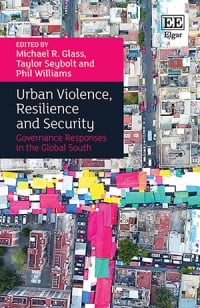
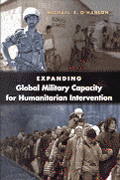
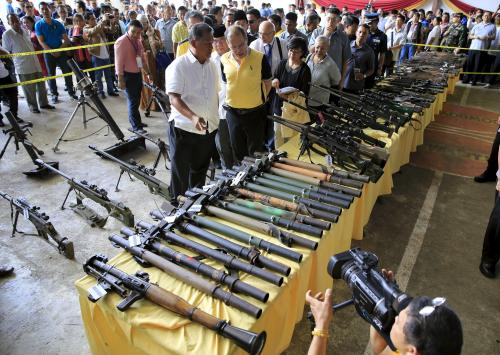
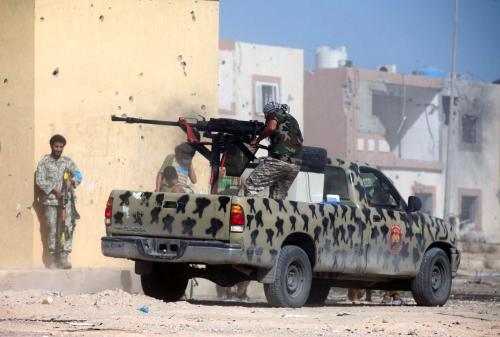
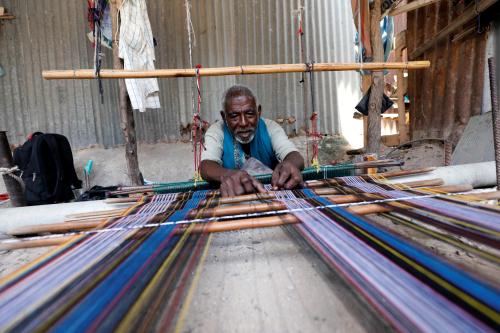
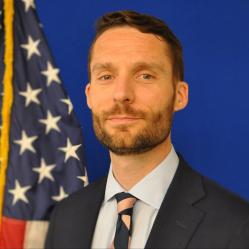



Commentary
How the United States can select and work with nonstate armed actors as stabilization partners
April 13, 2021